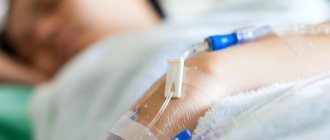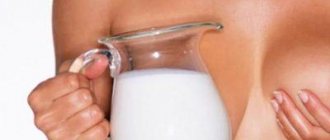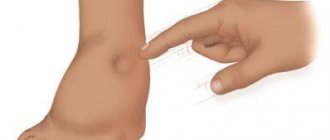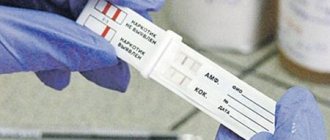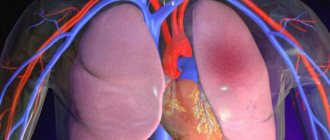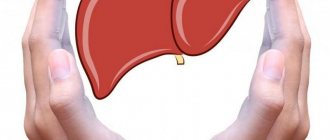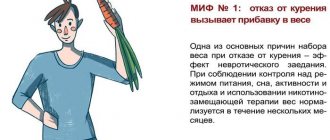This article is about toxic substances. For the Marvel Comics character, see Toxin (Marvel Comics).
Toxin
(ancient Greek τοξικός [toxikos] “poisonous”) - of biological origin. The science of poisons of biological origin is toxinology[1].
They are produced, for example, by tumor cells, infectious (from Latin inficio “to saturate; infect”) agents - bacteria, viruses, fungi (mycotoxins) or parasites, in particular helminths. A large group of toxins are produced by plants and marine invertebrates[2].
Types of toxins
Bacterial toxins are conventionally divided into exotoxins and endotoxins.
According to the target of action, toxins are divided into
- Hematic poisons ( Heamotoxic
) are poisons that affect the blood. - Neurotoxins ( Neurotoxic
) are poisons that affect the nervous system and brain. - Myoxic poisons ( Myotoxic
) are poisons that damage muscles. - Hemorrhagic toxins ( Haemorrhaginstoxins
) are toxins that damage blood vessels and cause bleeding, particularly inflammation of hemorrhoids. - Hemolytic toxins ( Haemolysinstoxins
) are toxins that damage red blood cells. - Nephrotoxins
are toxins that damage the kidneys . - Cardiotoxins toxins
that damage the heart. - Necrotoxins
- toxins that destroy tissues, causing them to die (necrosis ) - Other toxins
In what areas of activity is it used?
Neurotoxins relax muscles. Doctors administer therapeutic injections with small doses of the substance. Main uses of the medicine:
- cosmetology. Compound type “A” was used as a healing solution in the 80s of the 20th century. Today, several drugs are officially registered in Russia: Botox, Xeomin, Lantox and Dysport. These developments are suitable for facial correction,
- neurology. The “mysterious molecule” eliminates spasms after strokes, pain syndromes and muscle dystonia. The substance is suitable for normalizing sweating. Modern injection techniques allow the procedure to be performed with maximum precision,
- dentistry. The connection allows you to establish contracture of facial muscles and avoid Frey's syndrome. The “elixir” is injected into the muscles. The choice of injection site is an important factor to avoid infiltration of botulinum toxin.
We recommend reading
- Types of botulism prevention
- Is it possible to get arsenic poisoning during dental treatment?
- Possible causes of frequent poisonings
Botulinum toxin does not cause dramatic changes. After 9 months, the elements of the substance are destroyed. Over time, the neuromuscular fibers are restored. By reducing spastic muscle contractions, “crow’s feet” are observed in the eye area. Wrinkles and folds on the forehead disappear. If you do not follow the dosage rules, you can get paralyzed.
Links
- Supotnitsky M. V.
Countering bioterrorism Australia Group • Center for Biosecurity • US Centers for Disease Control and Prevention • Council of Europe Convention on the Prevention of Terrorism • DARPA • Military Threat Reduction Agency • European Center for Disease Prevention and Control • Global Health Security Initiative • Health Threat Unit (European Commission) • Rapid Response Laboratory Network • National Biodefense Analysis and Countermeasures Center • National Biosecurity Science Advisory Board • U.S. Army Institute of Infectious Disease Medical Research Biological agents (vectors) Anthrax • Avian influenza • Botulinum toxin • Brucellosis • Burkholderia pseudomallei • Chlamydophila psittaci • Coxiella burnetii • Ebola hemorrhagic fever • Venezuelan equine encephalitis • Eastern equine encephalitis • Western equine encephalitis • Food poisoning • Fungi • Glanders • Hantaviruses • Henipavirus • Legion ellosis • Marburg virus • Molds • Bubonic plague • Ricin • Salmonella enterica (intestinal salmonella) • Salmonellosis • Typhoid fever • Smallpox • Staphylococcus • Tularemia • Typhus • Hemorrhagic fever Related Topics Agroterrorism • Bacteria • Biological safety • Biological hazard • Biological weapons • Decontamination • Entomological weapons • Infectious diseases • Viruses • Toxin • Terrorism
Mechanism of action of botulinum exotoxin
Botulinum toxin is a protein complex that contains a neurotoxin and a protein. The compound molecule includes 2 chains of a disulfide bridge. A key part of the effect is tied to receptors on neuron cells. The mechanism of action of exotoxin includes several stages:
- Interaction with neuron receptors. As a result, lasting connections are formed. Enterotoxin reacts.
- Integration of toxin molecules. The structural element penetrates into the cells (botulinotherapy).
- The further effect of the substance is determined by the influence of the light chain on biochemical processes. Over time, neurotransmitter blockade is diagnosed. Wrinkles will be destroyed in several stages.
- Denervation of nerve fibers. The process of transmitting nerve impulses becomes difficult.
- Administration of the drug intramuscularly produces a muscle relaxant effect. Painful sensations fade into the background. A return to the reverse state is observed after 6 months.
Botulinum toxin type A is a complex protein. The molar mass of the substance is 3 times greater than the classical protein chain (149 thousand atomic units). This indicator of the molecule brings it closer to the maximum permissible limit of proteins. The structure and strength of the substance is comparable to the poison that is generated by tetanus bacteria (a group of clostridia).
What information is missing from the article?
- List of effective medications
- A detailed overview of traditional methods of treatment
- Professional opinion of a specialist
- Detailed review of antidotes
Excerpt characterizing Toxin
The war was flaring up, and its theater was approaching the Russian borders. Curses against the enemy of the human race, Bonaparte, were heard everywhere; Warriors and recruits gathered in the villages, and contradictory news came from the theater of war, false as always and therefore interpreted differently. The life of old Prince Bolkonsky, Prince Andrei and Princess Marya has changed in many ways since 1805. In 1806, the old prince was appointed one of the eight commanders-in-chief of the militia, then appointed throughout Russia. The old prince, despite his senile weakness, which became especially noticeable during the period of time when he considered his son killed, did not consider himself entitled to refuse the position to which he had been appointed by the sovereign himself, and this newly discovered activity excited and strengthened him. He was constantly traveling around the three provinces entrusted to him; He was pedantic in his duties, strict to the point of cruelty with his subordinates, and he himself went down to the smallest details of the matter. Princess Marya had already stopped taking mathematical lessons from her father, and only in the mornings, accompanied by her nurse, with little Prince Nikolai (as his grandfather called him), entered her father’s study when he was at home. Baby Prince Nikolai lived with his wet nurse and nanny Savishna in the half of the late princess, and Princess Marya spent most of the day in the nursery, replacing, as best she could, a mother to her little nephew. M lle Bourienne, too, seemed to be passionately in love with the boy, and Princess Marya, often depriving herself, yielded to her friend the pleasure of nursing the little angel (as she called her nephew) and playing with him. At the altar of the Lysogorsk church there was a chapel over the grave of the little princess, and in the chapel a marble monument brought from Italy was erected, depicting an angel spreading his wings and preparing to ascend to heaven. The angel's upper lip was slightly raised, as if he was about to smile, and one day Prince Andrei and Princess Marya, leaving the chapel, admitted to each other that it was strange, the face of this angel reminded them of the face of a deceased woman. But what was even stranger, and what Prince Andrei did not tell his sister, was that in the expression that the artist accidentally gave to the face of the angel, Prince Andrei read the same words of meek reproach that he then read on the face of his dead wife: “Oh, why did you do this to me?..."
What is it and features
Botulinum toxin is a substance that is synthesized by anaerobic bacteria. The substance is generated in soil, bottom sediments and in meat products that are not properly prepared. Consumption of low-quality canned food can lead to botulism. The toxic substance is sensitive to the influence of high temperatures (over 60ºС).
Today, 2 types of toxin are known in medicine (range AG). In case of poisoning, the stomach is washed, a laxative is taken, and a special antitoxin is administered. There is a risk of poison entering through broken skin or a deep wound. In such cases, treatment with effective antibiotics is carried out. The lethal dose for an adult is 1 nanogram per 1 kg of human weight. One gram of structural substance contains 1 million lethal doses. The incubation period is 6 hours.
General signs of microorganisms
When studying single-celled organisms, the first stage of identification is based on the general properties of bacteria inherent in all prokaryotes (nuclear-free cells):
- microscopic dimensions (not visible to the naked eye);
- enormous speed of metabolism and, as a consequence, growth and reproduction;
- rapid adaptation to changed living conditions;
- the ability to change in a short time with the transmission of heredity;
Another feature common to all unicellular organisms is wide distribution. Microorganisms exist everywhere - in water, air, earth, human and animal bodies. The boundary conditions of their habitat range from temperatures of hundreds of degrees and water pressure at a depth of several kilometers to rarefied air and subzero temperatures in the stratosphere. True, curious researchers have found a place on earth where it is not so easy to find bacteria - certain areas of the Atacama Desert (South America). This land has not seen rain for decades, perhaps hundreds, of years. Even the bacteria gave in - water is necessary for any form of protein life.
Bisphenol A
Bisphenol A (BPA) is a chemical found in some hard plastic products, such as baby bottles, water bottles and hard plastic tableware, as well as canning materials and meat packaging. Buy BPA-free products or choose products made from other materials, such as glass. The fact is that, according to research by scientists from China and the USA, bisphenol A increases the risk of developing breast cancer, obesity and heart disease. And according to the Centers for Disease Control, about 93% of Europeans and Americans suffer from an excess of this toxin in their bodies.
Where it is found: in hard plastics - dishes, water bottles, baby bottles, plastic food packaging.
Activity
The high degree of toxic activity of bacteria is caused by disruption of metabolism and other life processes at the molecular level and at minimal concentrations. Poisons are characterized by specificity to tissue and organ biotargets. Accordingly, toxins of cytotoxic and systemic action are distinguished. Toxins with systemic effects include myotropic (crototoxin), neurotropic (bungarotoxins, botulinum toxins), cardiotoxins (palytoxin). An example of a cytotoxic poison would be a toxin with less tissue specificity (secreted by gas gangrene bacteria).
Dioxins
Dioxins are formed when chlorine or bromine is burned by reacting with carbon and oxygen. They are potent carcinogens that affect the immune system. In addition, these toxins are very long-lasting. Just imagine: once they enter the body, they remain in it for an average of 7–11 years. Among other things, dioxins can cause sexual and reproductive dysfunction in both men and women.
Contains: meat, milk, fish and shellfish.
Chemical composition
By the nature of the chemical composition, most bacterial toxins have high molecular weight substances (glycoproteins, proteins, peptides) in their structure.
Biochemists, in accordance with the chemical properties of bacteria, divide bacterial poisons into several groups:
- proteotoxins – represented by a group of proteins of simple or complex configuration;
- aflatoxins – have a distinctive feature in the form of a steroid configuration;
- lipid A is a group of complexes of lipopolysaccharides, the toxic activity of which is determined by the lipid.
This biochemical, as well as immunochemical diagnostic approaches made it possible to argue for the effect of antitoxins. Their production allows medical scientists to distinguish one toxic bacterial biopolymer from another. It has also become possible to determine in vitro toxigenic strains and non-toxigenic (in vitro), the degree and pathophysiological mechanisms of toxic effects on the body.
Introduction of toxin by bacteria
Paul Ehrlich was the first to determine the molecular properties of bacterial toxins by using antitoxins as molecular probes. Ramon Gaston, based on his theoretical developments, introduced the production of bacterial toxoids.
Antitoxic studies have made it possible to carry out differential diagnosis of bacterial toxins with their division into serotypes (serological variants, groups), which is determined by antigenic properties. Through serological research, the identity of certain serotypes of bacteria of various genera and species has been proven. As research has established, thermolabile enterotoxins and cholera toxins produced by E.coli and Sal.typhimurium are related in antigenic properties.
